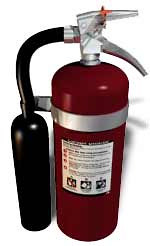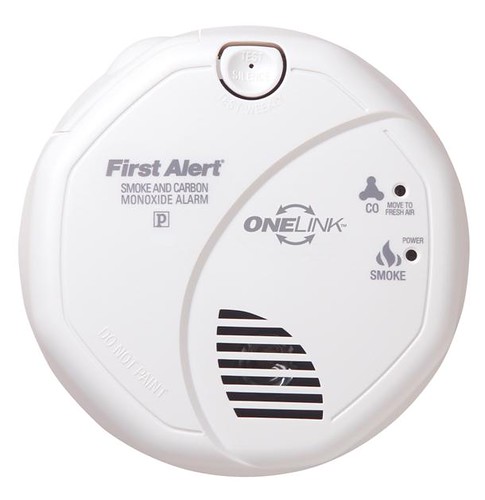
Where is Your Fire Extinguisher?
When is the last time someone asked you the metrics for the "About", "Who We Are" or in a few cases, "Press Materials" area of your website? Have you ever asked a customer their impression of your company after reading that section? If you are like most organizations, the "Who We Are" section of the web is treated like the company's fire extinguishers hanging on the wall:
- Bought once. (READ: Outdated)
- Encased in glass. (READ: Not dynamic)
- Not proactive, but reactive.
- Used in case of emergency only. (Read:Ignored 99% of the time) and...
- Most employees couldn't tell you where it is. (Read: Not wel-integrated into the company's overall strategy)
 Smoke Alarms
Smoke AlarmsI would submit this area of an organization's website needs to be treated more like the smoke alarms in your house.
- Located properly throughout the home. (In this case, the web.)
- Everyone knows where they are. (Read: Strategic area of the site.)
- Tested for functionality throughout the year. (Read: Dynamic and updated continuously.)
- Proactive. Warn of impending trouble ahead of time. (Read: Mechanism available to warn of danger and react to it.)
"Many businesses and non-profits fail to realize the web is their only marketing entity which is accessible 24-7. "Let that marinate a second. In the web marketing arena, everyone tends to focus on the metrics tied to revenue - click through, conversion, bounce rate, page views, visits, et al. Revenue is what pays the bills, our shareholders, and us. I give this only so much credence. My personal view is, hey animals can count. What separates humans from the animals is our ability to think and reason.
What am I saying?
All the click-throughs in the world will not protect your company from a boycott, moral scandal, socially irresponsible investment, or a lawsuit. It will,however, for sure impact your brand, your image, your revenue, and your future. Hard and Fast. When something goes down, rest assured the "Who We Are" section of an organization's website is the first place the media, detractors, customers,etc. will head looking for ammunition.
The fact is in today's global economy, consumers are more socially, politically, and environmentally conscious than ever in history. Like it or not, these beliefs now dictate consumer purchasing decisions. Same goes for online. People are evaluating your company or institution based on its environmental policies, commitment to diversity, reputation of its leadership, human rights policies, etc. These things need to be clearly stated on an organization's website, whatever that position is, with a mechanism for discussion or feedback from your customers. Then my smoke alarm analogy comes into play.

